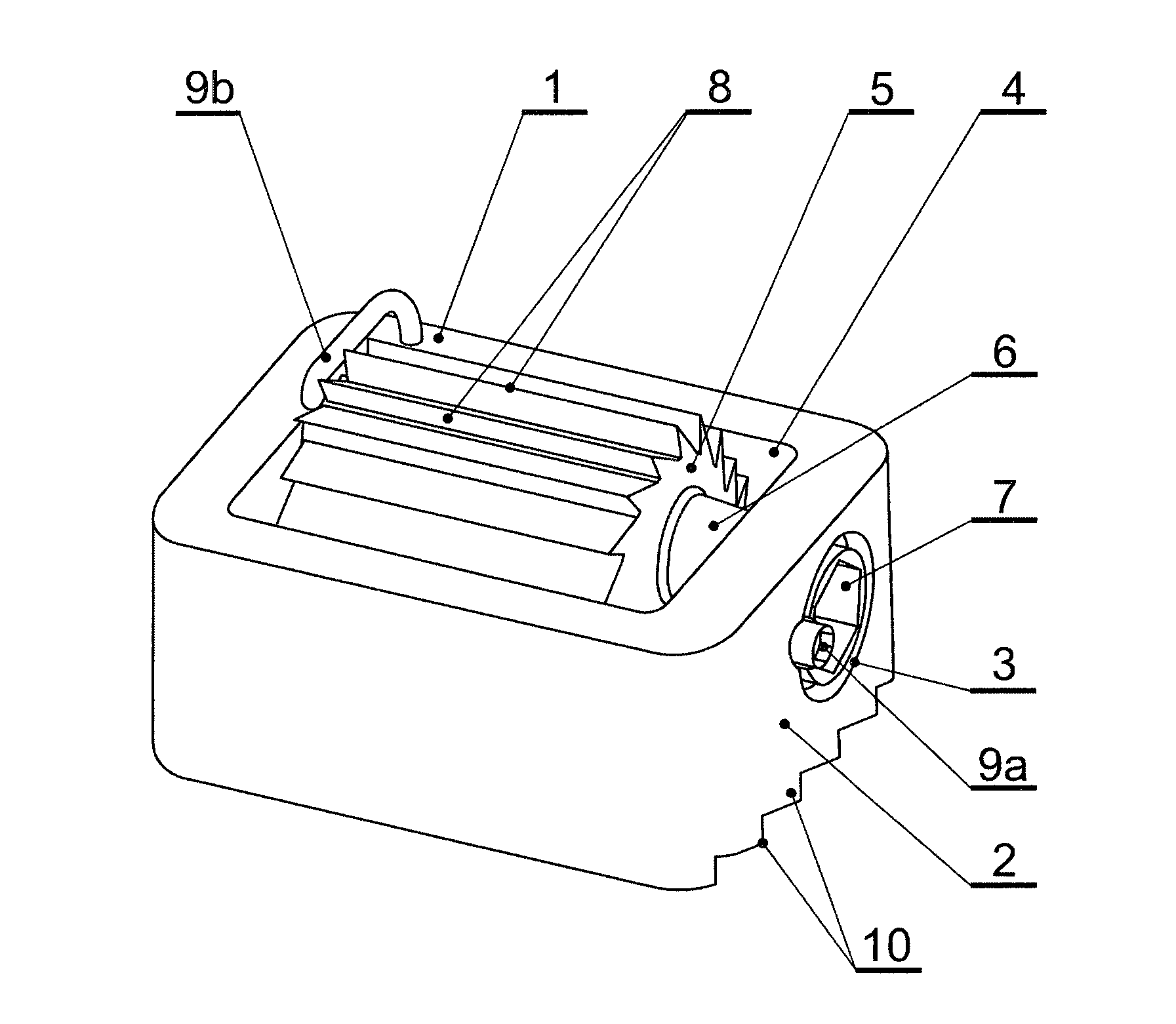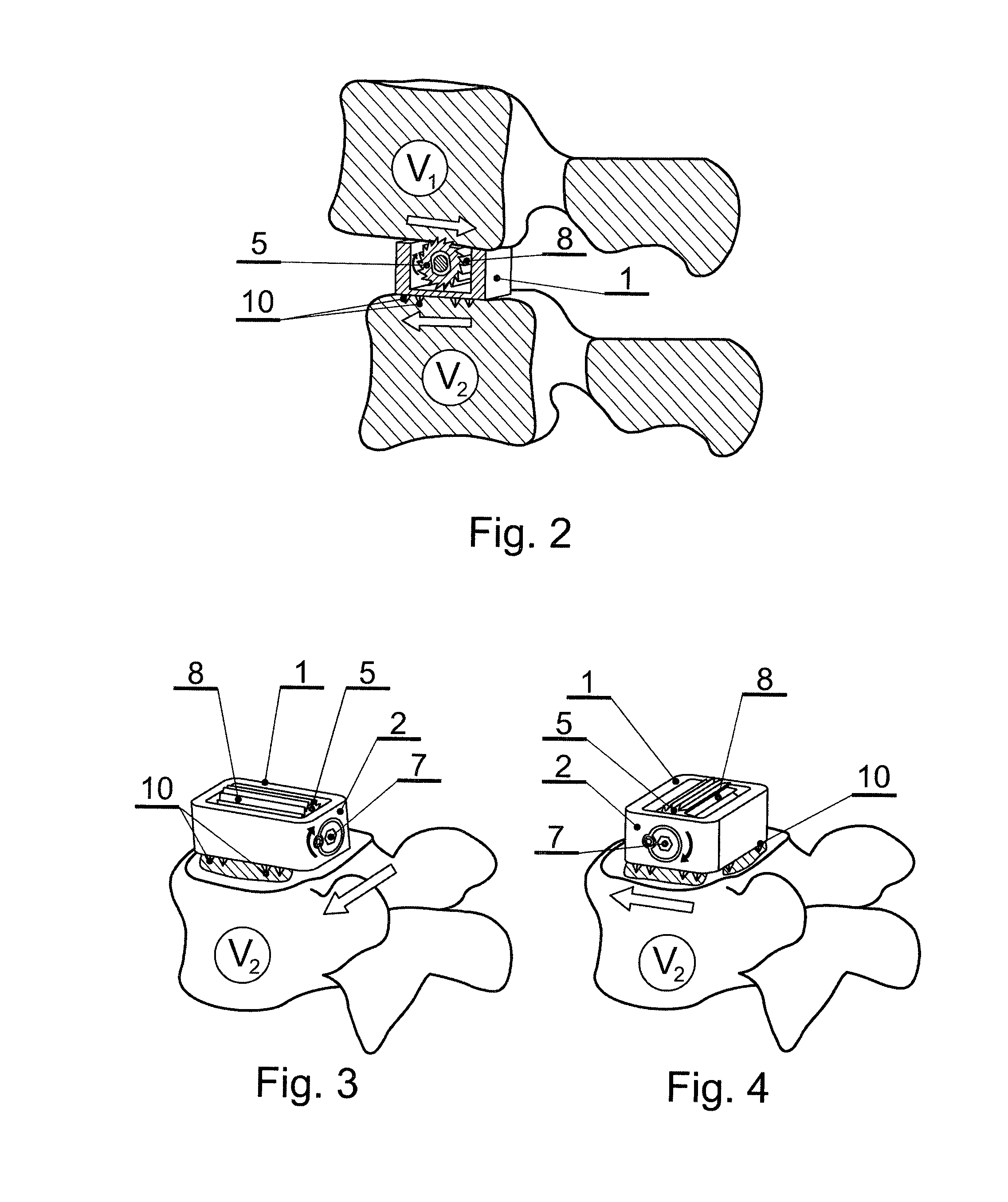Intervertebral implant for mutual situating of adjacent vertebrae
a technology of intervertebral implants and adjacent vertebrae, which is applied in the field of intervertebral implants for mutual positioning of adjacent vertebrae, can solve the problems of lack of opportunity to displace adjacent vertebrae relative to each other in the coronal or sagittal plane, and lack of mutual adjustment of vertebrae, etc., to achieve simple and compact construction, efficient performance, and restore normal adjustment of vertebrae
- Summary
- Abstract
- Description
- Claims
- Application Information
AI Technical Summary
Benefits of technology
Problems solved by technology
Method used
Image
Examples
Embodiment Construction
[0118]Presented on FIG. 1 intervertebral implant for mutual situating of adjacent vertebrae contains a cover 1 in a shape close to the rectangle, in which is fixed a driving mechanism. In a lateral wall 2 of the cover 1 a manipulative hole 3 is made. The cover 1 is equipped with one open seat 4. The driving mechanism composes situated in the seat 4 and anchoring in one of displaced vertebrae one rotational element 5 with an axis 6 mounted for an axial movement in lateral walls 2 of the cover 1 perpendicularly to the direction of the displacement of vertebrae against each other, cooperating with the connecting element 7. The rotational element 5 is equipped with anchoring latches 8 projecting over the height of cover's 1 walls 2 from the side contacting with one of displaced vertebrae and anchoring in this vertebrae. Anchoring latches 8 have got a form of paddles of equal dimensions and shapes. The connecting element 7, situated within the diameter of the manipulative hole 3 of the c...
PUM
 Login to View More
Login to View More Abstract
Description
Claims
Application Information
 Login to View More
Login to View More - R&D
- Intellectual Property
- Life Sciences
- Materials
- Tech Scout
- Unparalleled Data Quality
- Higher Quality Content
- 60% Fewer Hallucinations
Browse by: Latest US Patents, China's latest patents, Technical Efficacy Thesaurus, Application Domain, Technology Topic, Popular Technical Reports.
© 2025 PatSnap. All rights reserved.Legal|Privacy policy|Modern Slavery Act Transparency Statement|Sitemap|About US| Contact US: help@patsnap.com



